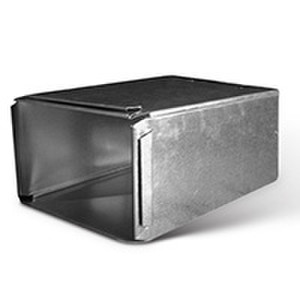
Square Duct Transition: Seamless Airflow Solutions for HVAC Systems
When it comes to HVAC (Heating, Ventilation, and Air Conditioning) systems, efficiency and effectiveness are of paramount importance. Proper airflow is crucial for maintaining indoor comfort, energy efficiency, and air quality. Square duct transitions are key components in achieving seamless airflow solutions for HVAC systems, ensuring that air moves smoothly from one section of the ductwork to another. In this guest post, we’ll explore the benefits and importance of square duct transitions and provide answers to some frequently asked questions.
Understanding Square Duct Transitions
Square duct transitions are elements used in HVAC systems to smoothly change the shape or size of the ductwork while maintaining the consistent flow of air. These transitions can be rectangular to square, square to rectangular, or square to round, depending on the system’s design and requirements. They are commonly used to connect different sections of ductwork, such as from the main supply duct to individual branch ducts or from the return duct to the air handler.
Benefits of Square Duct Transitions
Square duct transitions offer several advantages for HVAC systems:
Efficient Airflow: Square transitions ensure that air moves smoothly, reducing turbulence and pressure drops, which can improve the overall efficiency of the HVAC system.
Space Optimization: They are excellent for situations where space constraints exist, as square ducts can maximize the use of available space.
Aesthetic Appeal: Square ductwork transitions can be visually pleasing, providing a clean and organized appearance in commercial and residential settings.
Seamless Integration: These transitions make it easy to integrate different sections of ductwork, helping ensure a uniform and consistent airflow throughout the system.
Reduced Noise: By reducing turbulence and air resistance, square duct transitions can help minimize noise associated with the HVAC system.
Energy Efficiency: Improved airflow means that the HVAC system can operate more efficiently, potentially saving on energy costs.
Types of Square Duct Transitions
There are various types of square duct transitions available to cater to different HVAC system needs:
Rectangular to Square Transition: These transitions change the shape of the ductwork from a rectangular cross-section to a square cross-section, or vice versa. They are used when transitioning between ducts of different shapes.
Square to Round Transition: Square to round transitions convert a square duct into a round duct, or vice versa. They are particularly useful when connecting to round HVAC components like fans or diffusers.
Square to Square Transition: Square to square transitions maintain the same cross-sectional shape but allow for a change in size, optimizing airflow within the same shape.
Offset Square Transitions: These are designed to offset the position of the ductwork, allowing for a change in direction while maintaining airflow efficiency.
Installation Considerations
Proper installation of square duct transitions is crucial to reap the benefits and ensure seamless airflow in your HVAC system. Here are some key installation considerations:
Sizing: Ensure that the size and type of transition match the specific requirements of your HVAC system.
Sealing: Properly seal all joints and connections to prevent air leakage, which can reduce system efficiency.
Alignment: Align the transition with the existing ductwork accurately to maintain a smooth airflow path.
Support: Use appropriate supports to secure the transition in place, preventing sagging or misalignment over time.
Professional Installation: For complex systems or unfamiliar installations, it’s advisable to seek the assistance of a professional HVAC technician.
FAQs About Square Duct Transitions
Here are some frequently asked questions related to square duct transitions:
1. Can I use square duct transitions for both residential and commercial HVAC systems?
Yes, square duct transitions are suitable for both residential and commercial HVAC systems. They offer the same benefits for different types of applications.
2. How do I choose the right size for a square duct transition?
The size of the square duct transition should match the specific requirements of your HVAC system. Consult the system’s design or seek advice from an HVAC professional for proper sizing.
3. Are square duct transitions compatible with round ductwork?
Yes, square to round transitions are available and are used to connect square ductwork to round HVAC components like fans, diffusers, or round ducts.
4. Can square duct transitions be customized for specific needs?
Yes, square duct transitions can be customized to fit specific needs, including unique sizes, shapes, and materials.
5. How do I ensure a square duct transition is properly sealed to prevent air leakage?
Use appropriate sealing materials, such as mastic or foil tape, and ensure that all joints and connections are sealed tightly to prevent air leakage.
6. Are square duct transitions easy to install for DIY enthusiasts?
While some simple installations can be handled by DIY enthusiasts, complex systems or unfamiliar installations are best left to professional HVAC technicians.
7. Do square duct transitions impact energy efficiency in HVAC systems?
Yes, square duct transitions can improve energy efficiency by reducing pressure drops and turbulence, which allows the HVAC system to operate more effectively and potentially save on energy costs.
8. Can square duct transitions be used for retrofits or system upgrades?
Yes, square duct transitions are versatile and can be used for retrofits and system upgrades to improve airflow in existing HVAC systems.
In conclusion, square duct transitions play a crucial role in achieving seamless airflow solutions for HVAC systems. Their benefits include efficient airflow, space optimization, aesthetic appeal, and improved energy efficiency. By understanding the different types of square duct transitions and following proper installation practices, you can enhance the performance of your HVAC system and ensure optimal indoor comfort.
If you have any more questions or need further assistance with square duct transitions for your HVAC system, don’t hesitate to consult with an HVAC professional or a reliable ductwork supplier.


